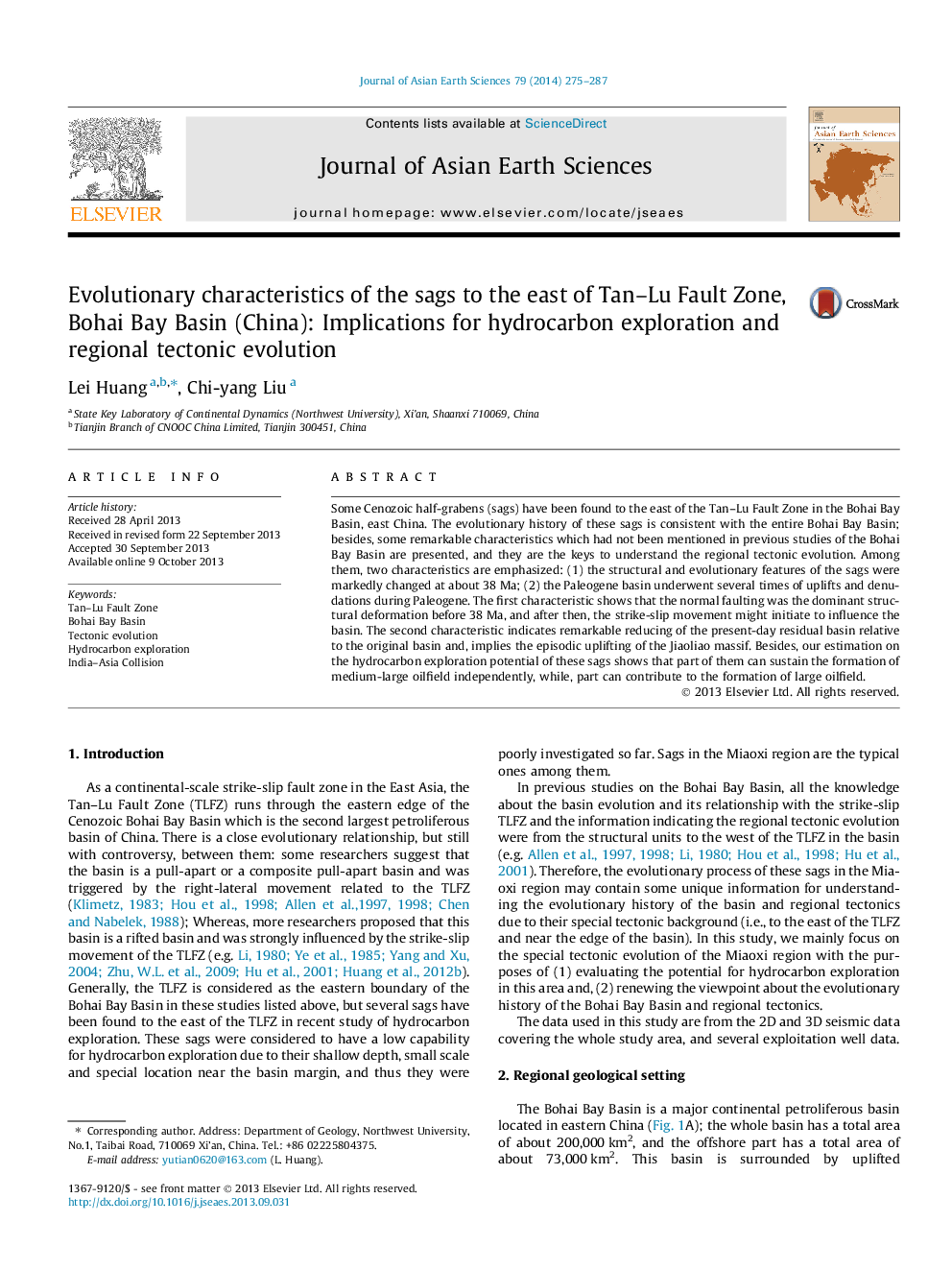| Article ID | Journal | Published Year | Pages | File Type |
|---|---|---|---|---|
| 4730907 | Journal of Asian Earth Sciences | 2014 | 13 Pages |
•Sags to the east of Tan–Lu Fault Zone are investigated for the first time.•Structural features of the sags were markedly changed at about 38 Ma.•Several times of uplifts occurred in the sags during Paleogene.•Cenozoic uplifting history of Jiaoliao massif is suggested for the first time.
Some Cenozoic half-grabens (sags) have been found to the east of the Tan–Lu Fault Zone in the Bohai Bay Basin, east China. The evolutionary history of these sags is consistent with the entire Bohai Bay Basin; besides, some remarkable characteristics which had not been mentioned in previous studies of the Bohai Bay Basin are presented, and they are the keys to understand the regional tectonic evolution. Among them, two characteristics are emphasized: (1) the structural and evolutionary features of the sags were markedly changed at about 38 Ma; (2) the Paleogene basin underwent several times of uplifts and denudations during Paleogene. The first characteristic shows that the normal faulting was the dominant structural deformation before 38 Ma, and after then, the strike-slip movement might initiate to influence the basin. The second characteristic indicates remarkable reducing of the present-day residual basin relative to the original basin and, implies the episodic uplifting of the Jiaoliao massif. Besides, our estimation on the hydrocarbon exploration potential of these sags shows that part of them can sustain the formation of medium-large oilfield independently, while, part can contribute to the formation of large oilfield.
